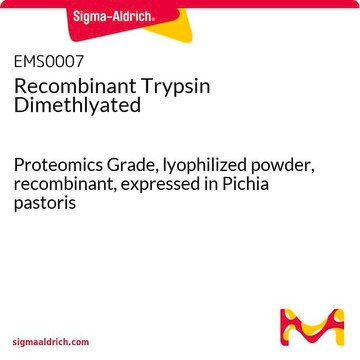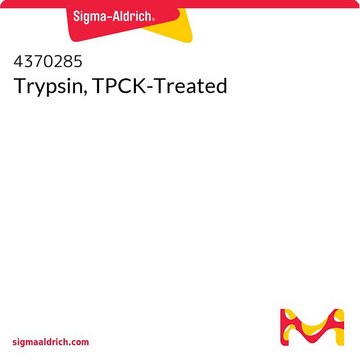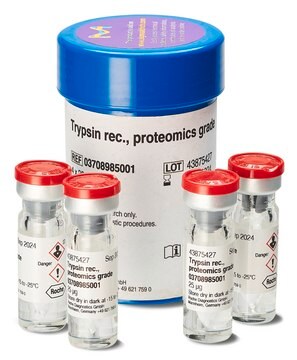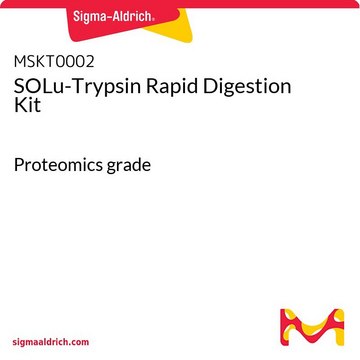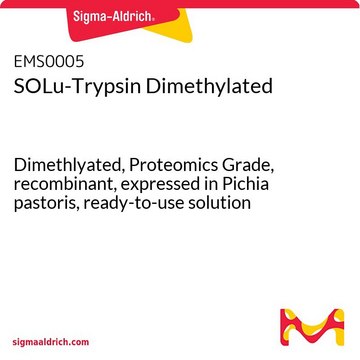T7575
Trypsin Singles, Proteomics Grade
Synonym(s):
Proteomics grade, Trypsin, TPCK treated
About This Item
Recommended Products
grade
Proteomics Grade
Quality Level
form
ready-to-use solution
specific activity
≥10,000 BAEE units/mg protein
mol wt
average mol wt 23.29 kDa
optimum pH
~8.0
storage temp.
2-8°C
General description
Trypsin Singles, Proteomics Grade exhibit excellent proteolytic efficiency, generating more tryptic peptides leading to greater sequence coverage of your peptide of interest. Mass spectra are significantly simplified due to the reduced number of interfering autolytic peaks and their ambiguous adducts. Proteomics Grade Trypsin has been extensively purified from porcine pancreas to enable accurate and precise cleavage on the carboxylic side of Arg and Lys residues. The enzyme has been exhaustively processed by reductive methylation to minimize autolysis and chymotryptic activity has been quenched by TPCK treatment. Further purification steps including affinity chromatography and drying from dilute acid produce a highly purified, high specific activity trypsin purposely suited for the demanding criteria of proteomics research, and designed to function in either solution or gel-based digests.
Application
Features and Benefits
- Convenient, single-use 1 μg size
- Eliminates repetitive pipetting
- Reductively methylated to minimize autolytic activity
- TPCK treated to quench chymotryptic activity
- Extensively purified
related product
Signal Word
Danger
Hazard Statements
Precautionary Statements
Hazard Classifications
Acute Tox. 4 Dermal - Acute Tox. 4 Inhalation - Acute Tox. 4 Oral - Eye Irrit. 2 - Flam. Liq. 2 - Resp. Sens. 1 - Skin Irrit. 2 - STOT SE 3
Target Organs
Respiratory system
Storage Class Code
3 - Flammable liquids
Certificates of Analysis (COA)
Search for Certificates of Analysis (COA) by entering the products Lot/Batch Number. Lot and Batch Numbers can be found on a product’s label following the words ‘Lot’ or ‘Batch’.
Already Own This Product?
Find documentation for the products that you have recently purchased in the Document Library.
Customers Also Viewed
Our team of scientists has experience in all areas of research including Life Science, Material Science, Chemical Synthesis, Chromatography, Analytical and many others.
Contact Technical Service


